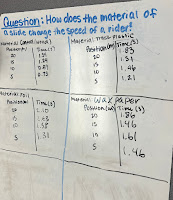Week 8 Blog Post
Lab: Today we had our space presentations. The 6 main topics were the origin of the Universe, the Lifecycles of Stars and galaxies, the Origin of the Earth, black holes, and exploration of space. For Black Holes, I learned that Black holes are formed when a big hole is at the end of its life when it becomes too weak to support its own gravity and collapses on itself. Black holes can also be of different sizes. The parts of the black hole include the event horizon (point of no return), the singularity (center of the black hole gravity becomes super intense becoming infinite), and the accretion disk (found on most black holes is the ring of gas and dust). My group presented on Galaxies, and when I thought I knew a lot about it already, I gained more information yet again. Galaxies consist of stars, planets, and vast clouds of gas and dust, all bound together by gravity. Galaxies are known to also come forward in a variety of shapes, like spirals and ellipticals. Galaxies are typically old as on average they are between the age of 10 and 13.6 billion years old. There are also many kinds of galaxies like spiral, elliptical, and irregular galaxies.
Lecture:
Big Bang- 13.7 billion years ago there was nothing. A subatomic particle inflated to unimaginably huge sizes in a fraction of a second. Time and space were then created. Big Bang really changed over time drastically is what I learned and this led to other creations. There were a couple other theories of the Big Bang. These include things like the Steady State universe where it meant that this universe would be infinite with no end is one of the theories. We then learned more details and concepts on Stars, that started unfolding how the actual galaxy was formed. I was reminded that stars and galaxies began to form about 12.7 billion years ago. The earth was formed 4.65 billion years ago. Stars that explode will be bigger than our sun because of the supernova growing things even though it was for a shorter time. It also gets bigger as they burn. There are over 2 trillion galaxies within the universe around us. Black holes are dense, that can escape easily.
(EARTH WAS NOT FORMED OR DID NOT BECOME CREATED BY THE BIG BANG!)
Textbook Reading Notes: (origins and the universe)
From the textbook reading today, I learned about the timeline of the formation of the universe. First, the Big Bang occurred, it then transitioned into the first black holes forming, which then directly went to the mass star formation, which then led to the Milky Way formation to finally the sun, earth, and moon formation which was the most recent thing that occurred still being 4.5 billion years ago. It was most helpful learning about each part of the formation of the universe. the Big Bang Theory kicked it all off by inventing the scientific theory of how the universe was created. The text explained how the word "bang in big bang was referring to an expansion of the formation of the universe increasing and evolving. Along with that I also took away just how much makes up the life cycles of stars and how many moving parts there are regarding it. The nebulae are what kick it off which begins with the clouds of gas and dust in space, it says that that is where stars begin their cycle of formation. I thought it was helpful learning about how all of this leads to the nebula attracting other things to allow for more gravity to pull in particles to later leads to the star igniting and becoming a fully functioning star. I need more information on how each key event in the formation of the universe truly leads to a smooth transition of forming all aspects of the universe.

Comments
Post a Comment